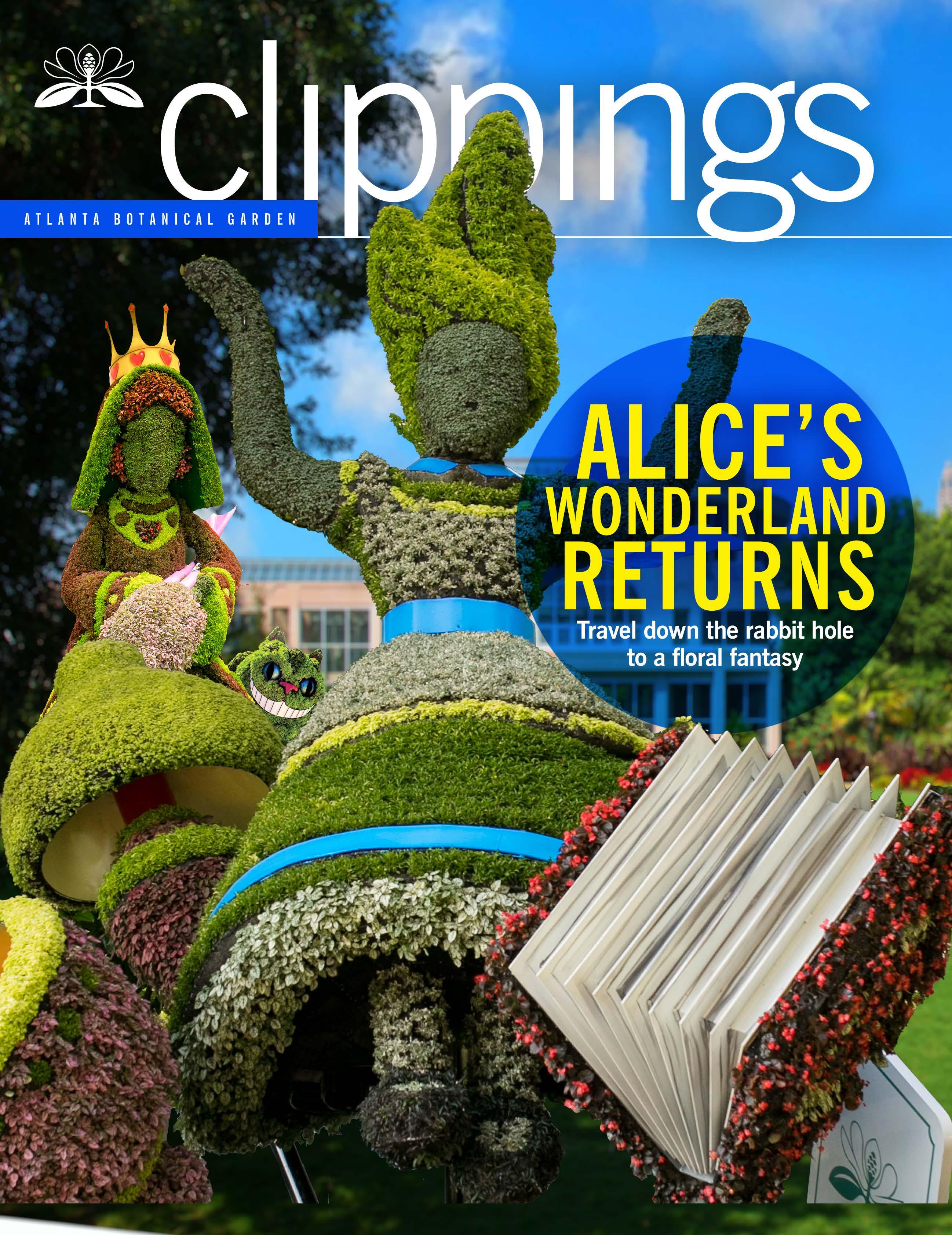
Atlanta | Gainesville | May – August 2024 MOSAICULTURE GARDEN PLANS • COCKTAILS IN WONDERLAND • PARTERRE FIT FOR A RED QUEEN


tracks when they read the plant label.
The Edible Garden also has become very popular for our wide array of programs around food. We know the way to a heart can be through the stomach, so the education team has created a multitude of programs that focus on gardening with edible plants as well as cooking, canning and pickling produce. We also have created lasting partnerships with other nonprofits involved in urban agriculture that have an important impact on communities – most notably Friends of Refugees, which supports Clarkston’s refugee community with its garden. One favorite annual event is the June Refugee Recipe Celebration when our chefs cook the fresh produce with recipes from refugees in Clarkston. What a beautiful way to connect people to the foods of other cultures!
Edible Garden produce is used in our multitude of programs, and last year more than 1,000 pounds was donated to the community food program Concrete Jungle for distribution.
The garden’s Outdoor Kitchen also serves as the hub for cooking classes. I am encouraged to see young people taking an interest in container gardening as well as growing edibles.
All of this is important because it positively impacts physical as well as mental health. A garden robust with tomatoes, basil, eggplant and figs is a beautiful sight, and there is such personal satisfaction in harvesting food we have grown ourselves.
Like so many of their generation, my parents had a small vegetable garden that my siblings and I enjoyed every summer. I like to think that this trend of edible gardens and renewed interest in fresh food truly demonstrates that “what’s old is new again.”
Mary Pat Matheson
Anna and Hays Mershon President & CEO

2 atlantabg.org | Atlanta
| Official News Publication for Members of the Atlanta Botanical Garden | Atlanta | Gainesville
|
|
|
Vice President, Marketing: Jessica Boatright
Editor: Danny Flanders
Designer: Bo Shell
Membership Manager: Claudia McDavid

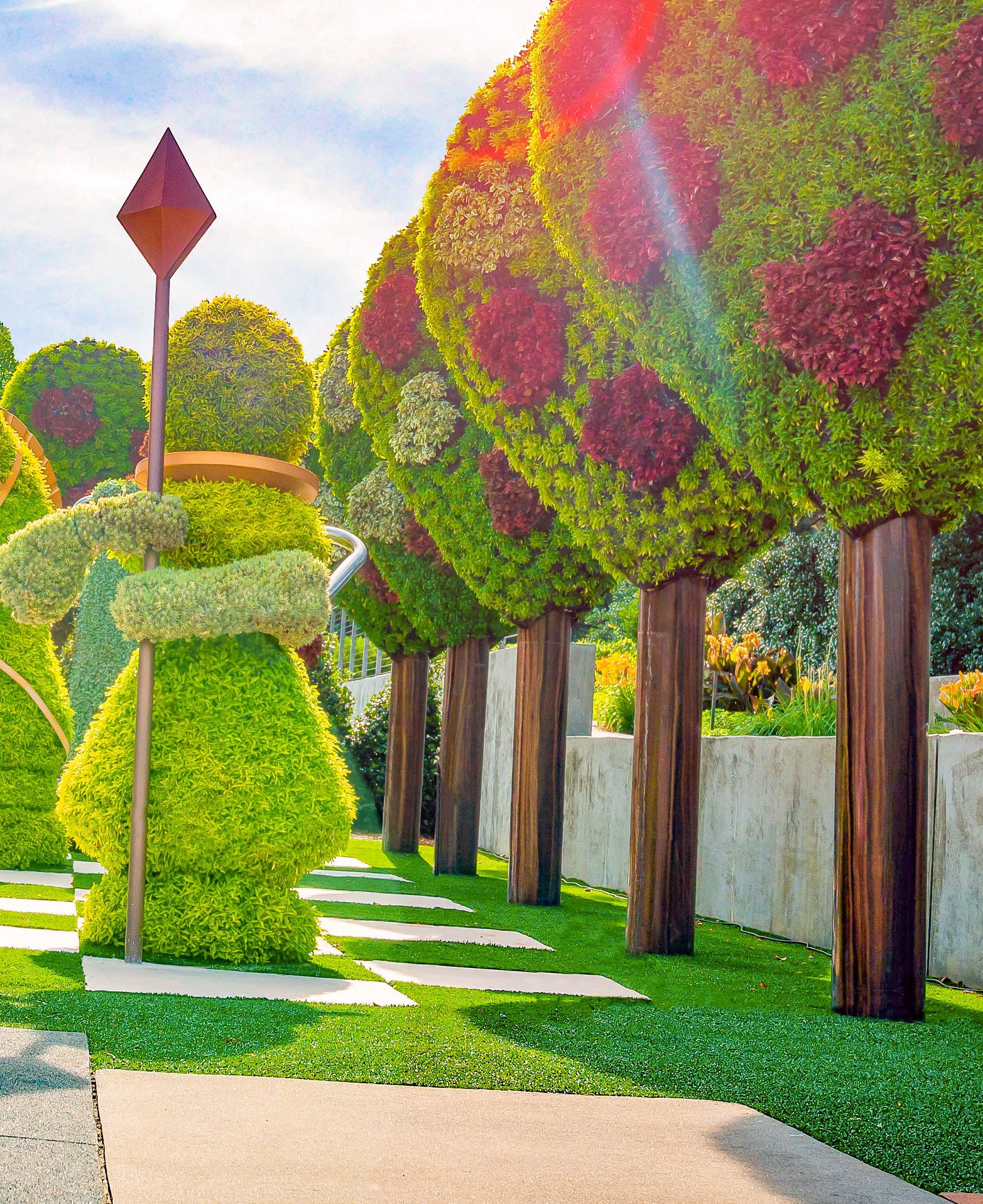
Alice’s Wonderland Returns!
Plant sculpture exhibit encores May 11
Don’t be like Rabbit. Be on time so as not to miss one of the Garden’s most popular spring art exhibitions when it returns for an encore May 11 – September 15 with dozens of plant sculptures.
Alice’s Wonderland Returns features seven installations of 38 topiary-like sculptures created from the centuries-old horticultural art of mosaiculture, in which steel forms are covered in fabric, filled with soil-like matter and planted with thousands of summer annuals to form a dense, colorful carpet.
The sculptures – crafted in Montreal, Canada, and assembled and planted by Garden horticulturists mostly in a greenhouse in Buford, Georgia – have been in the works for nearly a year. The cast of characters features:
• Alice herself, twirling down that famed “rabbit hole” in Howell Fountain.
• The giant White Rabbit marking time in the Skyline Garden pond.
• A colorful Chess Set sprawling across the Event Lawn.
• The Red Queen playing croquet along the edge of the Great Lawn.
• A trio of Storybooks that sets the stage for the plot along the entry Promenade.
• A curious Cheshire Cat surveying the a ction from its perch on Alston Overlook.
• Giant Singing Flowers serenading guests to recorded music along the Flower Walk.
The flowers are a new addition to the ensemble, which debuted at the Garden in 2019 during Imaginary Worlds: Alice’s Wonderland Guests loved the show so much it was brought back in 2020 along with several new sculptures for a revival called Alice’s Wonderland Reimagined
And the Garden’s history of presenting mosaiculture dates back even further. The sculptures were first presented to audiences 11 years ago when it introduced Imaginary Worlds: Plants Larger Than Life, the United States’ first major exhibition of the work produced by Mosaïcultures Internationales de Montreal, a nonprofit that stages enormously popular exhibitions and competitions around the world.
Alice’s Wonderland Returns is made possible through the generous support of The Isdell Family Foundation and Primrose Schools.
3 Atlanta |

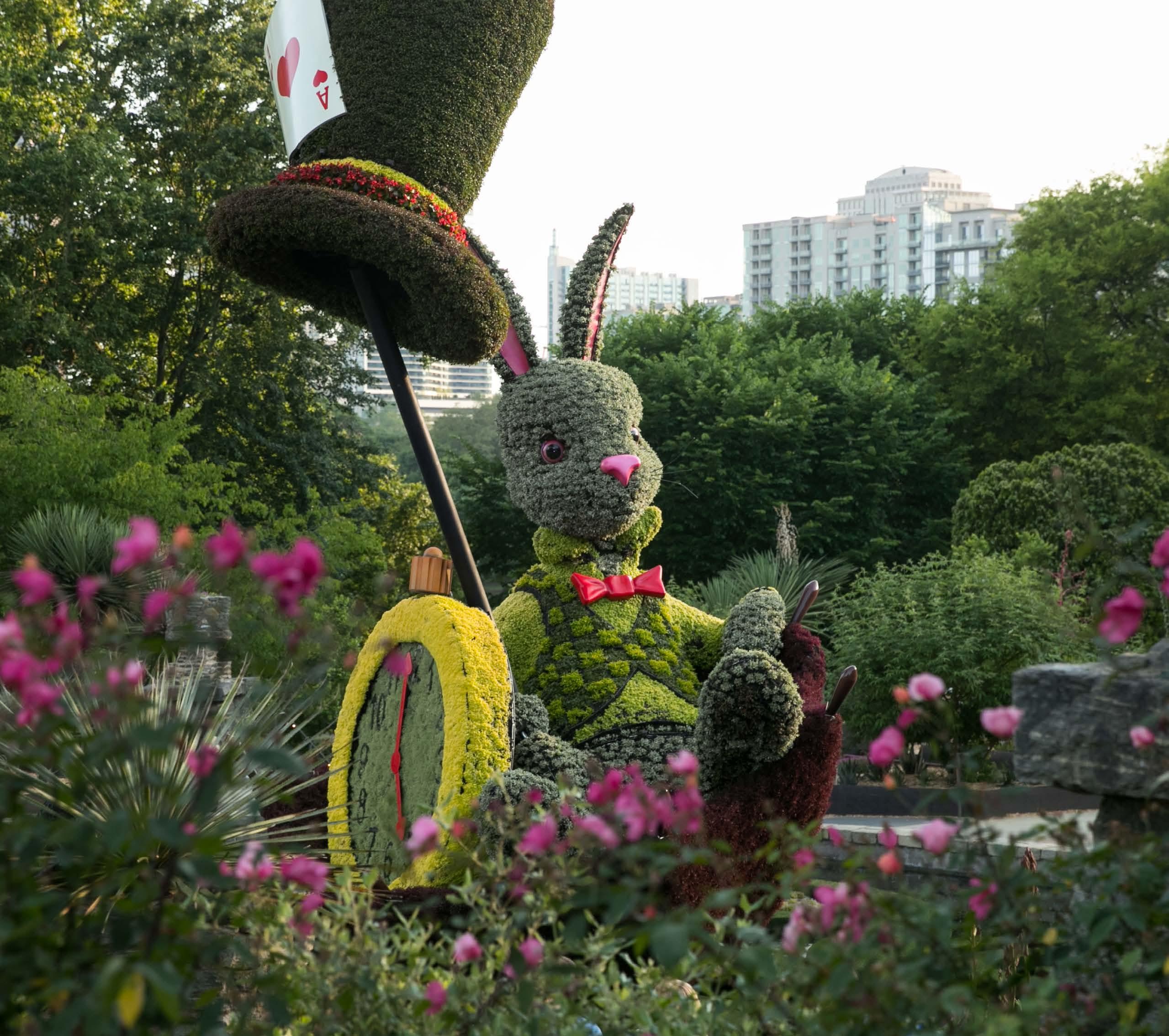
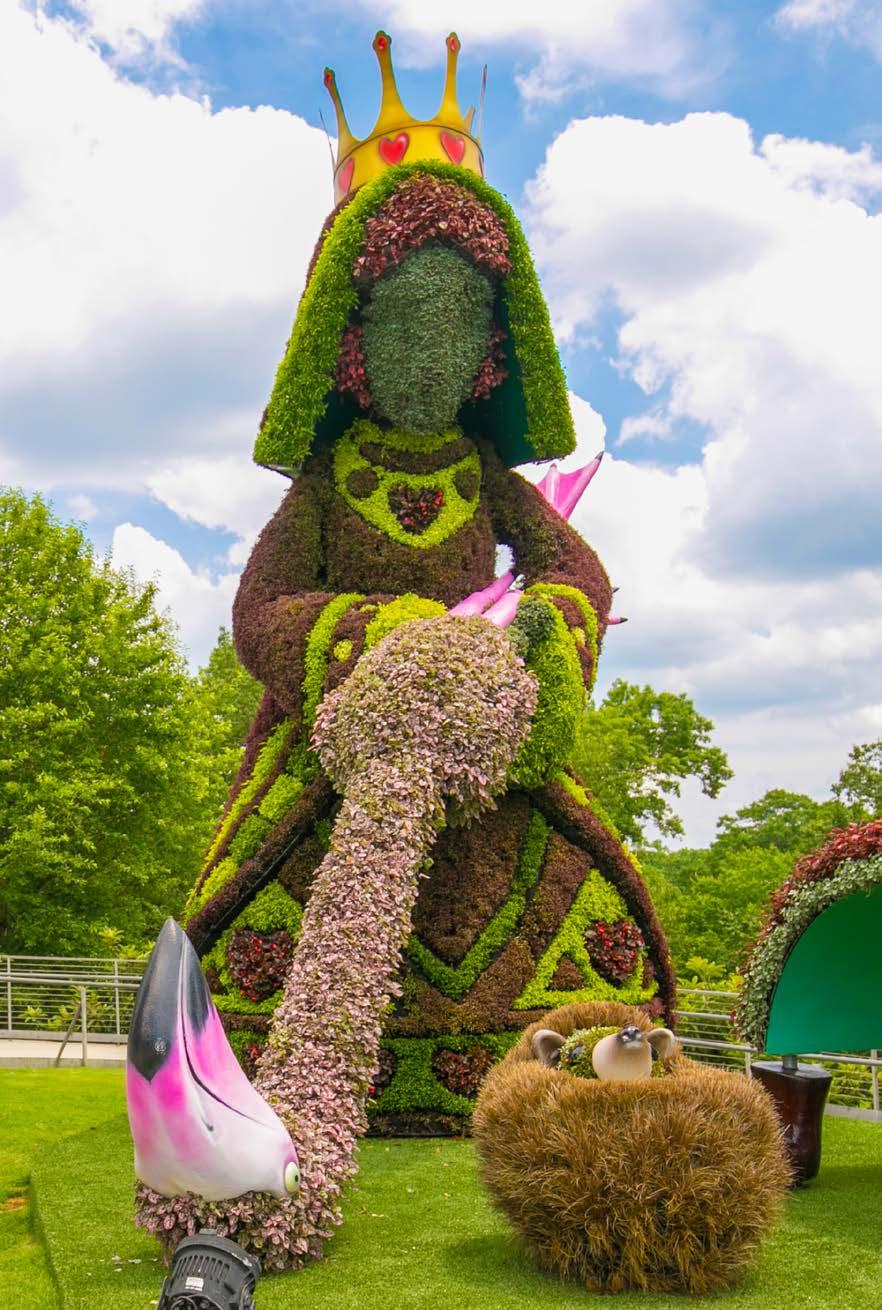
The villainous Red Queen, who invites Alice to play croquet using flamingos as mallets, is so large she was built in two pieces and weighs 3,600 pounds.
Did know?you
At more than 27 feet, the White Rabbit is the Garden’s tallest mosaiculture sculpture, so large it had to be shipped from Canada in 14 parts and assembled on site. Rabbit requires nearly 800 five-gallon buckets of soil and nearly 20,000 plants.
The origins of mosaiculture date to 16th-century Europe in the form of embroidery-like designs of plantings in compartmentalized gardens, much like the Garden’s Levy Parterre.
Mosaïcultures Internationales de Montreal was created to launch the first-ever international sculpture competition with that city in 2000 to promote gardening as an expression of new millennium values.
4 atlantabg.org
| Atlanta
Cocktails in Wonderland blooms on Thursdays!
One of the most enjoyable times of year to enjoy the Garden is during the cool of summer evenings while sipping a cocktail. Some guests relish a quiet stroll, while others prefer to engage in a fun party atmosphere.
This year, the Garden offers both! Guests will still get to enjoy their favorite beverage from cash bars on Tuesday through Sunday evenings until 9 while exploring the plant sculptures of Alice’s Wonderland Returns, dramatically lit at night.
But on Thursdays, they will be treated to something more – a fun-filled Cocktails in Wonderland, including Alice-themed specialty drinks, scavenger hunts, discovery stations, live music, yard games and photos ops with a real-life Alice! And, yes, it’s all free to members.
Regardless of “your thing,” end your long day with a nightcap (or two) in the Garden!
Cocktails in Wonderland
Thursdays, May 16 – September 12, 5 – 9 p.m.
Containing five sections, the Alice sculpture rotates not only to depict her going down the famed rabbit hole but also to provide her plants with adequate exposure since the sculpture stands in an area that receives part sun and part shade.
Two sculptures from previous Garden exhibitions have become part of its permanent art collection: Earth Goddess and Shaggy Dog.
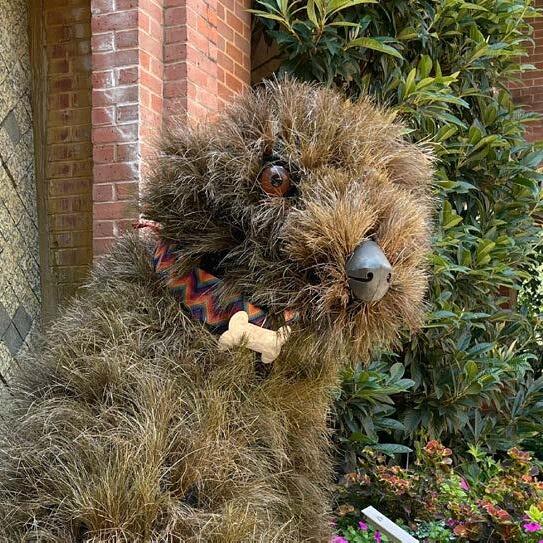
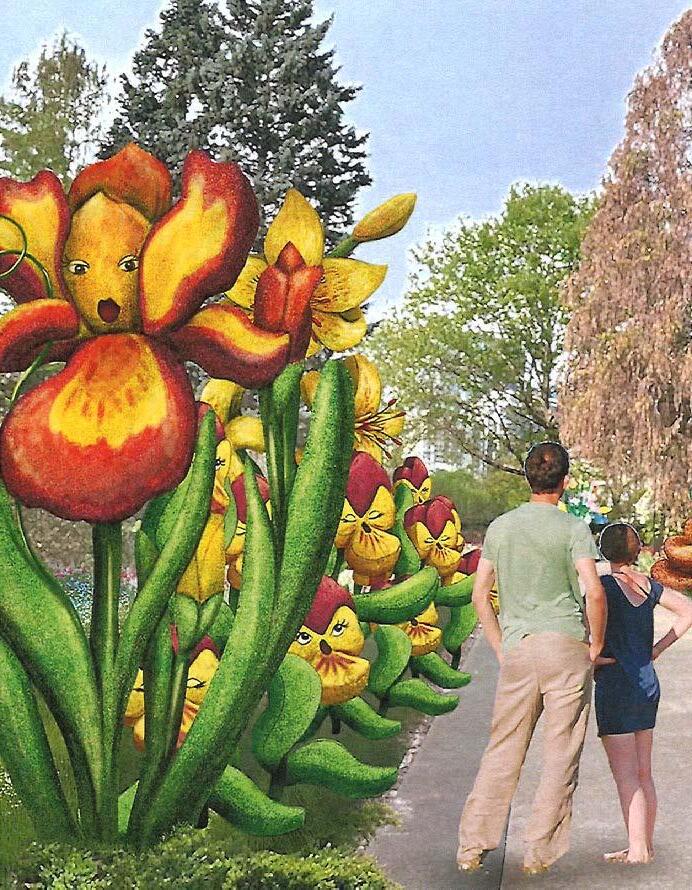
In Alice Through the Looking Glass, Alice encounters a garden full of talking flowers – hence the addition of Singing Flowers, ranging from 6 to 11 feet tall.
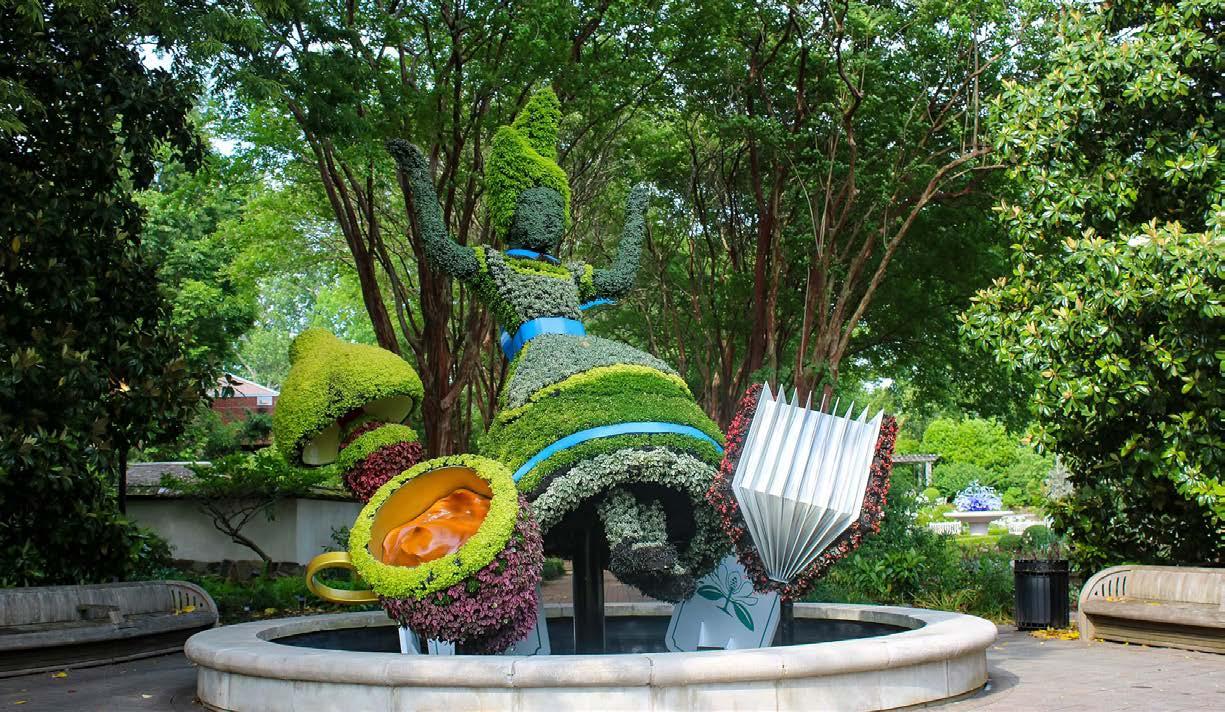
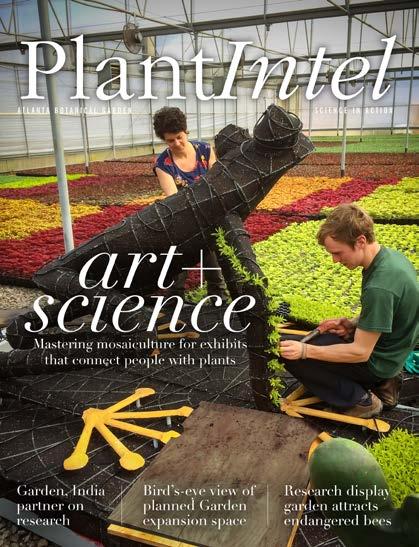
MORE ON MOSAICULTURE...

In tribute to the Red Queen, the Parterre is planted all in red and white, pages 6 – 7
The Garden’s planned expansion includes a garden devoted to mosaiculture, pages 8 – 9
Go behind the scenes in PlantIntel magazine to see what it takes to create mosaiculture, atlantabg.org/plantintel; copies also available in Hardin Visitor Center
Atlanta | atlantabg.org 5
All hail Her Majesty!
In tribute to Red Queen, Parterre is awash in red, white plantings
To celebrate the return of the Red Queen featured in this spring’s Alice’s Wonderland Returns exhibit, the horticulture team is welcoming her with a garden of her own. The formal hedges of the Levy Parterre will accentuate a circular pattern of red and
Hibiscus moscheutos
‘Midnight Marvel’
Common name: Rose Mallow
Characteristics: Reaching about 4 feet tall and wide, this shrublike perennial features deep, wine-purple foliage and large, bright red flowers that can reach about 10 inches across. Bloom time: July - September
Alcantarea odorata
Common name: Fragrant Alcantarea
Characteristics: A tropical plant that’s highly tolerant of heat, humidity and drought. This bromeliad reaches 5 to 6 feet and 3 to 4 feet wide, and makes a statement with its glorious silver foliage and elegant habit. Bloom time: Grown for foliage and can take three to five years to flower.
Mandevilla ‘Sun Parasol® Crimson’
Common name: Mandevilla
Characteristics: A vigorous tropical vine with showy, bright red trumpet-shaped flowers and deep, glossy green foliage. Quickly reaches 10 to 15 feet and is incredibly floriferous. Bloom time: May - frost
Begonia ‘BabyWing® White’
Common name: Begonia
Characteristics: Tolerant of both sun and shade, these versatile plants are virtual blooming machines and very low maintenance. Thick, shiny leaves are adorned with beautiful clusters of dainty white blooms. Bloom time: May - frost
Clerodendrum thomsoniae
Common name: Bleeding-heart Vine
Characteristics: A tender tropical vine hailing from West Africa, it climbs about 15 feet and is adorned with a snowy white flurry of calyces, each with a dark red corolla. Bloom time: July - frost
white flowers that surround the blue Chihuly fountain, complemented by an intricate mingling of geometric blocks of flowers and foliage near Alston Overlook and Day Hall. Emphasizing the formality of this garden, accented by the addition of clipped spiral
topiaries and tuteur trellises, the Parterre will be transformed into a stately garden that’s fit for a queen. Look for these plants during a stroll through the “Red Queen’s Parterre.”

Caladium bicolor
‘White Christmas’
Common name: Caladium
Characteristics: A perennial bulb grown as a tropical annual in this climate, caladiums are most often considered for a shady summer border, but many varieties thrive in full sun as well. ‘White Christmas’ features a stunning pattern of almost entirely white leaves with green mottling along the veins. Bloom time: Blooms sporadically throughout summer.
Pentas lanceolata
‘Graffiti® Red Velvet’
Common name: Egyptian Star Flower
Characteristics: A classic bedding annual reaching 1 to 2 feet tall that is heat tolerant and a pollinator favorite. ‘Graffiti Red Velvet’ has a dense, upright habit with bright red clusters of flowers. Bloom time: May - frost
Catharanthus roseus
‘Pacifica XP Polka Dot’
Common name:
Characteristics:
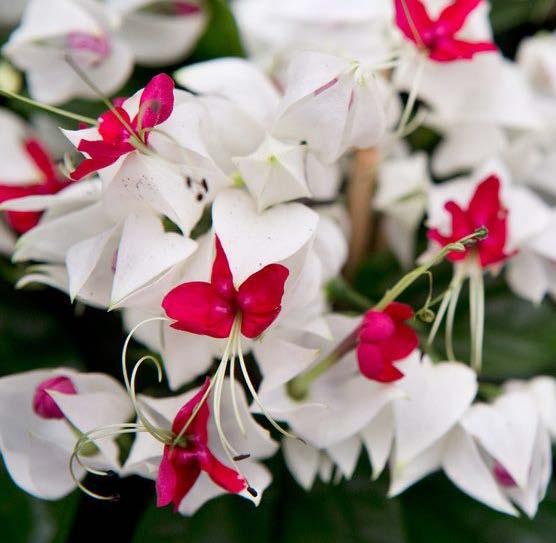
spring until first frost, this plant is used as a summer annual in this climate but is a woody perennial in its native home in Madagascar (Look for it in its natural form in the Conservatory Desert House). It’s not to be confused with the true Vinca, an evergreen groundcover. Bloom time: May - frost
Euphorbia hypericifolia
‘Hip Hop’
Common name: Graceful Spurge
Characteristics: A stellar annual that fills a variety of design niches, tolerates heat, humidity and drought, and takes sun or partial shade. It produces a non-stop display of tiny white flowers atop airy, graceful foliage. Bloom time: May - frost
6 atlantabg.org
1 2 3 4 5 6 7 8 9 5 | Atlanta
Michael Del Valle Outdoor Horticulture Manager


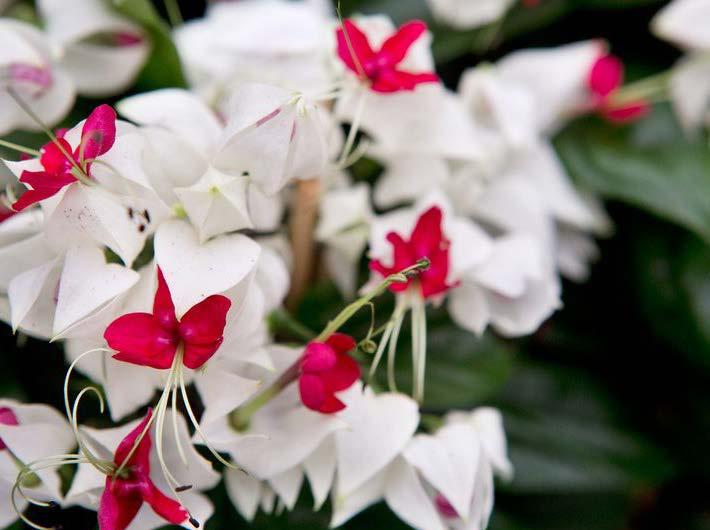

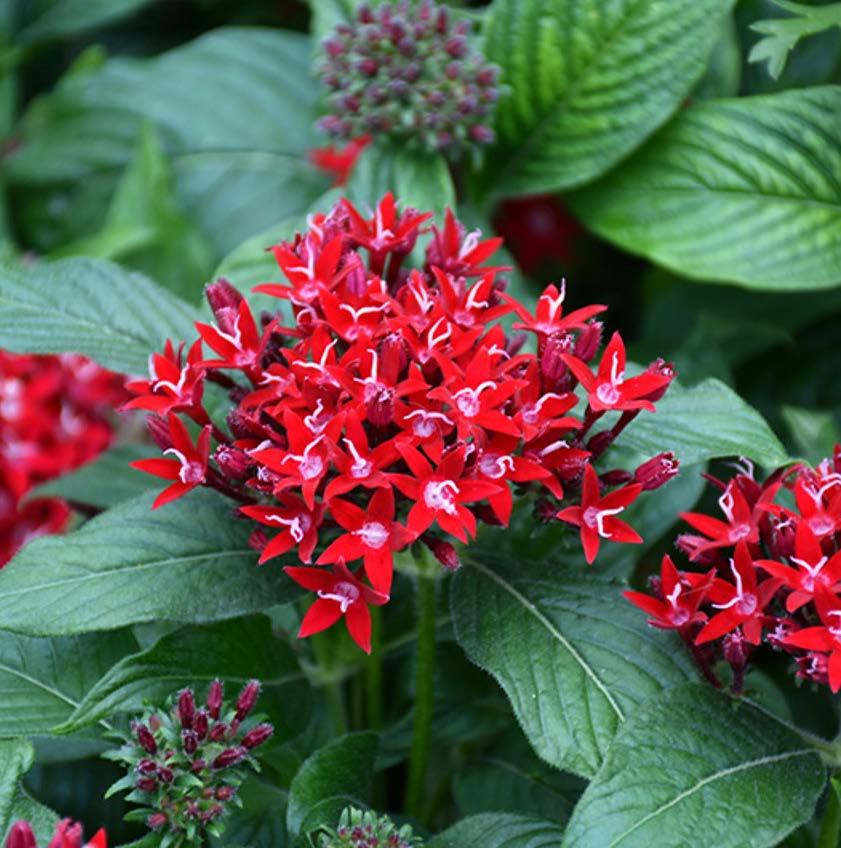


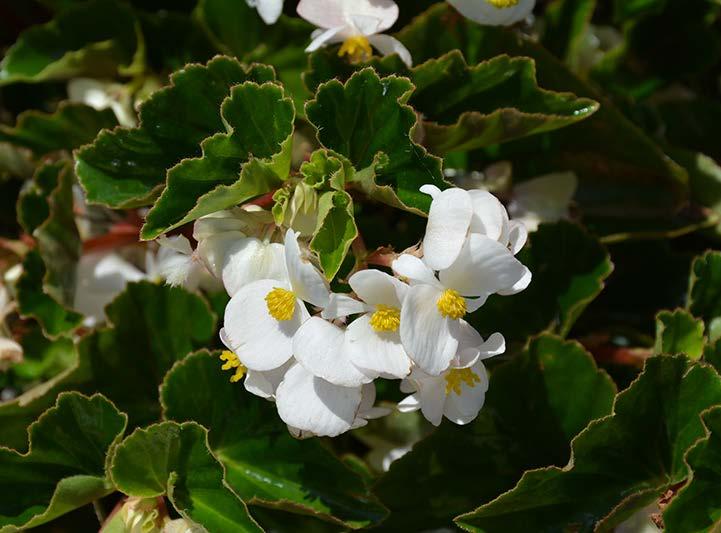


7 atlantabg.org andcuriouser!” – AliceinAlice’sAdventuresinWonderland “Curiouser 2 3 4 6 9 8 7 1 Atlanta |
WONDERLAND GARDEN



Wonder Gard WestminsterDr. Cell Tower Grand Axis Gardens Story Books
White
Cheshire Cat
Alice
Mirror Glade Schaudt Landscape Architects - Atlanta Botanical Garden New Garden Wonderland awaits! EXPANSION UPDATE atlantabg.org Cheshire Cat, a feature in this year’s Alice’s Wonderland Returns exhibition, is one of several potential sculptures slated for inclusion in the new Wonderland Garden.
Chess Board

“OnedayAlicecametoaforkin theroadandsawacheshirecatin atree.‘WhichroaddoItake?’she asked.Hisresponsewasaquestion: ‘Wheredoyouwanttogo?’”

Alice-themed sculptures will find semipermanent home in new garden
This spring’s Alice in Wonderland-themed mosaiculture exhibition, originally created in collaboration with Mosaïcultures Internationales de Montreal for display at the Garden in 2019, will find its way down the rabbit hole to the Garden’s planned expansion. A twirling Alice, the time-pressed White Rabbit, a grinning Cheshire Cat, the croque-playing Red Queen and a largerthan-life chess set are among the topiary-like sculptures that will be displayed rotationally in the new Wonderland Garden.
The garden room is among several planned for the nearly 8 acres of adjacent property that will expand the Garden to the Atlanta Beltline, where a pedestrian entrance will be created. The Garden expects site work for the project to begin in early 2025 with a targeted completion of late 2027. The project is being funded by a $150 million capital campaign, more than $100 million of which has been raised.
Visitor’s Center
Expansion Area

Guests may enter the Wonderland Garden from either the new site’s Water Terraces or the Walled Garden along a curved path weaving through whimsical hedges, leaving them guessing as to what’s around each bend. Currently being designed by Hoerr Schaudt Landscape Architects, the concept, coupled with specific plant selections, will bring this whimsical garden to life. In addition, another mosaiculture sculpture, the Phoenix – the symbol of Atlanta rising from the ashes as it did after the city was burned during the Civil War – will tower over the plaza entrance off the Beltline.
Amanda Bennett Vice President, Horticulture & Collections


9 12.5’ 25’ 50’ KEY PLAN KEY PLAN rland en
Story Books Red Queen 12/13/2023
KEY PLAN KEY PLAN –
LewisCarroll’sAdventuresinWonderland
Atlanta | atlantabg.org
Wonderland Garden
Renderings by Hoerr Schaudt Landscape Architects
Atlanta Beltline
Garden’s Nepenthes collection boasts long-lasting appeal Hungry carnivores
In the weird but wonderful world of plants, carnivores stand head, shoulders – and sometimes mouths – above the rest. Possessing an intrigue rivaled only by perhaps orchids, the pitcher plants, sundews, flytraps and butterworts have captivated the imaginations and wonder of both young and old, novice grower and seasoned naturalist.
From the fledgling days of the Garden’s greenhouses and conservatory, carnivorous plants were an early focus of collections. Then-Conservatory Superintendent Ron Determann supplied the original Nepenthes plants from his personal collection, and along with a focus on spearheading a conservation collection designed to safeguard populations of our imperiled native Sarracenia, continued to build a significant carnivorous plant collection still strong today. Over the years, the collections of carnivores grew increasingly noteworthy. In 1997 the International Carnivorous Plant Society held its first annual conference at the Garden, further establishing Atlanta’s significance in the horticulture and conservation world.
The Nepenthes genus naturally occurs from Madagascar through tropical Asia to Australia. Commonly referred to as Tropical Pitcher Plants, these plants are often inhabitants of nutrient-poor habitats ranging from acidic lowland swamps to exposed montane plateaus and cliffsides. There, these plants often employ both lower pitchers (often ground hugging and somewhat tubby shaped) as well as the upper pitchers (narrower pitchers often at the end of vining tendrils held aloft by climbing branches) to attract and trap their victims. They eventually succumb to the slippery interior of the pitcher and drown in a slurry of water, digestive enzymes and the remains of previous victims.
Guests can discover Nepenthes displayed throughout the Conservatory and Orchid Center, perhaps the most impressive in
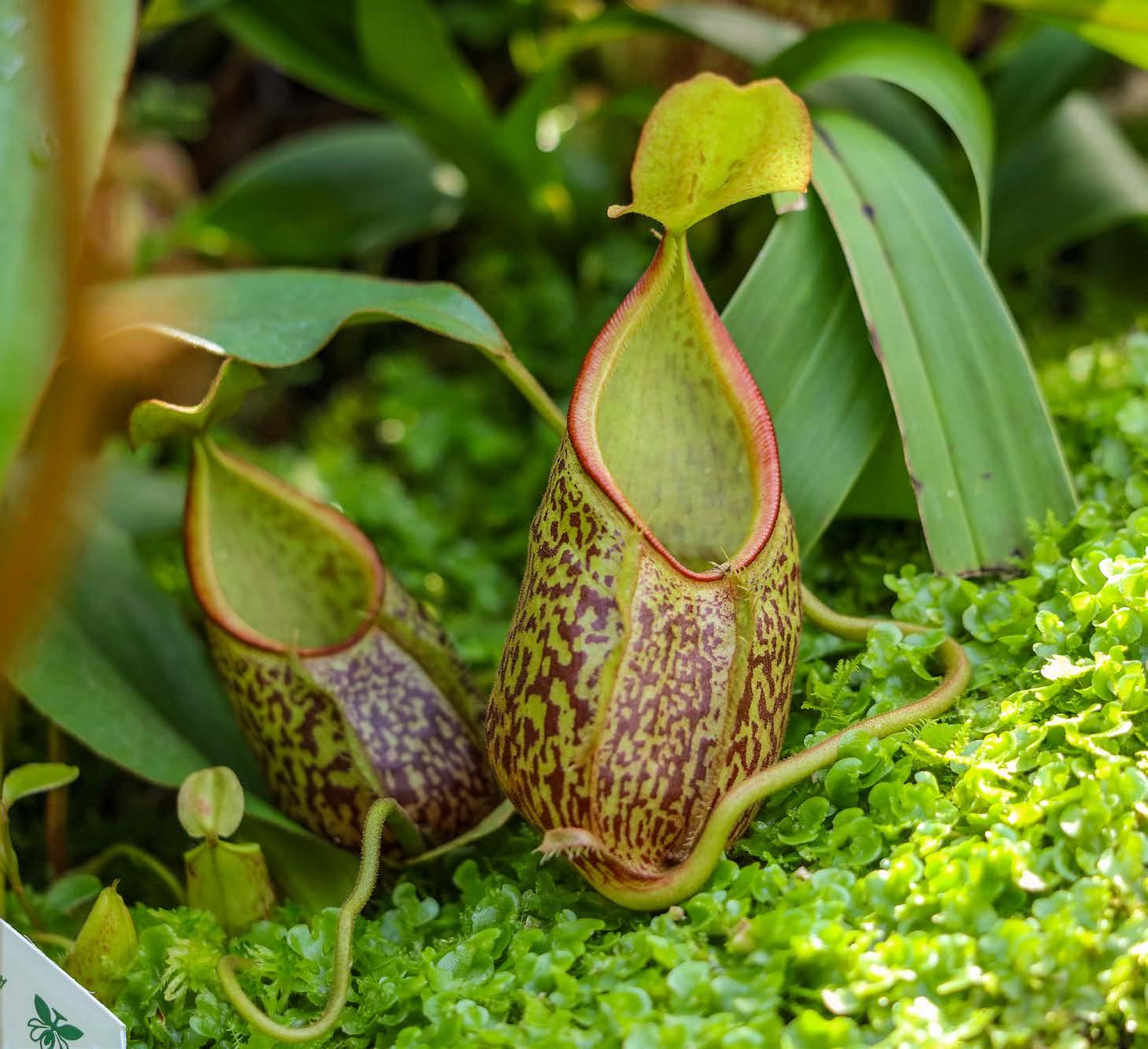
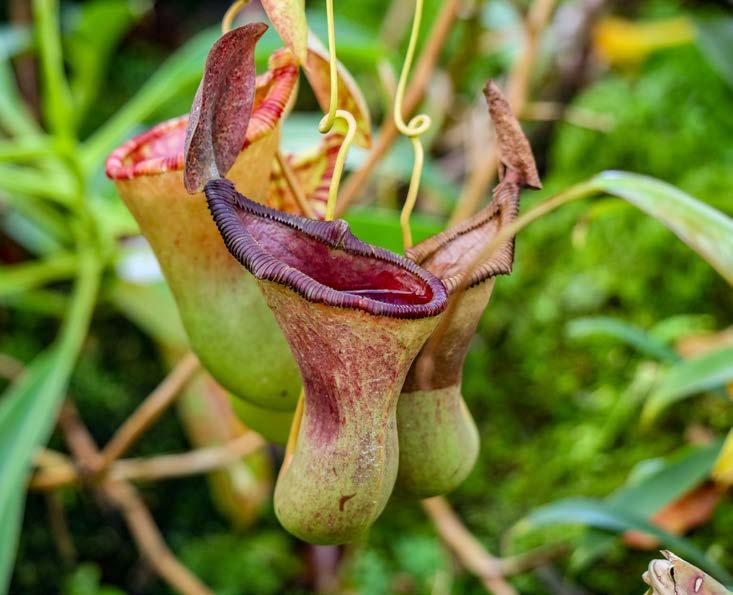
the High Elevation House where montane-growing species such as the magnificent N. gymnamphora can be seen up close.
An impressive array of species and hybrids scrambles through the shrubs, suspending their upper pitchers throughout the branches like fine ornaments. Many other species can be seen in hanging cedar baskets including one of the largest, N. robcantleyi
In the Orchid Display House are some older established clumps of N. ampullaria, a tropical lowland species that thrives in hot humid environments, often growing in actual wet swamp habitats not unlike our native Sarracenia
As a botanical garden, the focus is maintaining the true species, but there is also no denying the vigor and aesthetic appeal

that hybrids bring to a horticultural display, often brandishing desirable characteristics from both sets of parent plants. They all serve wonderfully as display plants for the public’s enjoyment.
| Atlanta 10 atlantabg.org
David Ruland Greenhouse Manager
N. Iowii
N. gymnamphora
N. robcantleyi
Partners in plants
Garden, India agree to collaborate on new species research
The Garden has entered an unprecedented agreement with the Indian government that will allow the two to collaborate on efforts to document, collect and identify new plant species in vastly underexplored regions of the country.
In exchange, the Garden will share its expertise with colleagues there about India’s biodiversity as well as improving horticultural techniques through ongoing training.
“This type of agreement has never before been reached between the Indian government and a nongovernmental organization, such as a private, nonprofit botanical garden,” said Mary Pat Matheson, the Garden’s President & CEO.
The agreement marks the second time the Garden has formalized its collaboration with plant explorers and scientists in southeast Asia, which yields the vast majority of plants suitable for growing in the southeastern United States. Since 2018, the Garden has had a similar partnership with colleagues in Vietnam.
The exchanges are the work of the Garden’s International Plant Exploration Program, formed in 2016 to collaborate

with partners around the world to help preserve and evaluate new plant species for use in southeastern landscapes.
“In the beginning, the focus was on plant collection, evaluation and exchanging knowledge via our visiting scholars program,” program manager Scott McMahan said. “Over the years, and after nearly 40 trips to southeast Asia, our priorities have shifted somewhat to develop meaningful, collaborative relationships with our colleagues in Asia.”
The Garden’s agreement with Vietnam has led to seven successful expeditions, documentation of multiple new plant species and the creation of a staff exchange
UPCOMING CLASS LISTINGS NOW ONLINE
ATLANTA
Basics of Water Gardening
This aquatic gardening primer offers an introduction to planting in pots and ponds, and managing aquatic plant pests and wildlife. Get a behind-the-scenes look at how the Garden cares for its ponds.
atlantabg.org
GAINESVILLE
Bird Feeder Wreath Making
This hands-on class allows participants to create a beautiful garden decoration that will bring music to their home, using foraged greenery, dried flowers and goodies for bird friends.
gainesvillegarden.org
program. During the program, Vietnamese researchers work with Garden horticulture and conservation staff to learn such things as propagation protocols for cuttings and seed, long-term storage of seed, hand pollination techniques and soil recipes.
“With these sorts of agreements in place, the Garden and its partners in India and Vietnam can continue to explore the remote, mountainous regions of these countries and document the remarkable biodiversity still remaining far away from human interference,” McMahan said.
GARDENING TIPS
ARTS & CRAFTS CHEF CLASSES
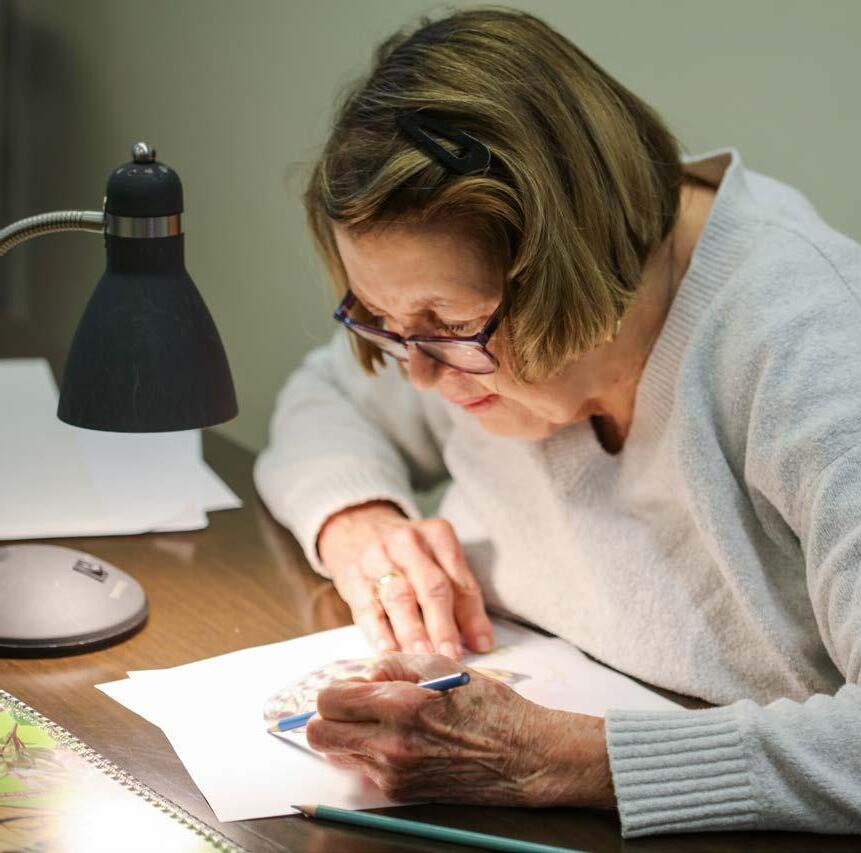
Atlanta | atlantabg.org 11
KNOWLEDGE BLOOMS!
Scott McMahan (left) with Indian government officials at the agreement signing in Kolkata.
atlanta happenings
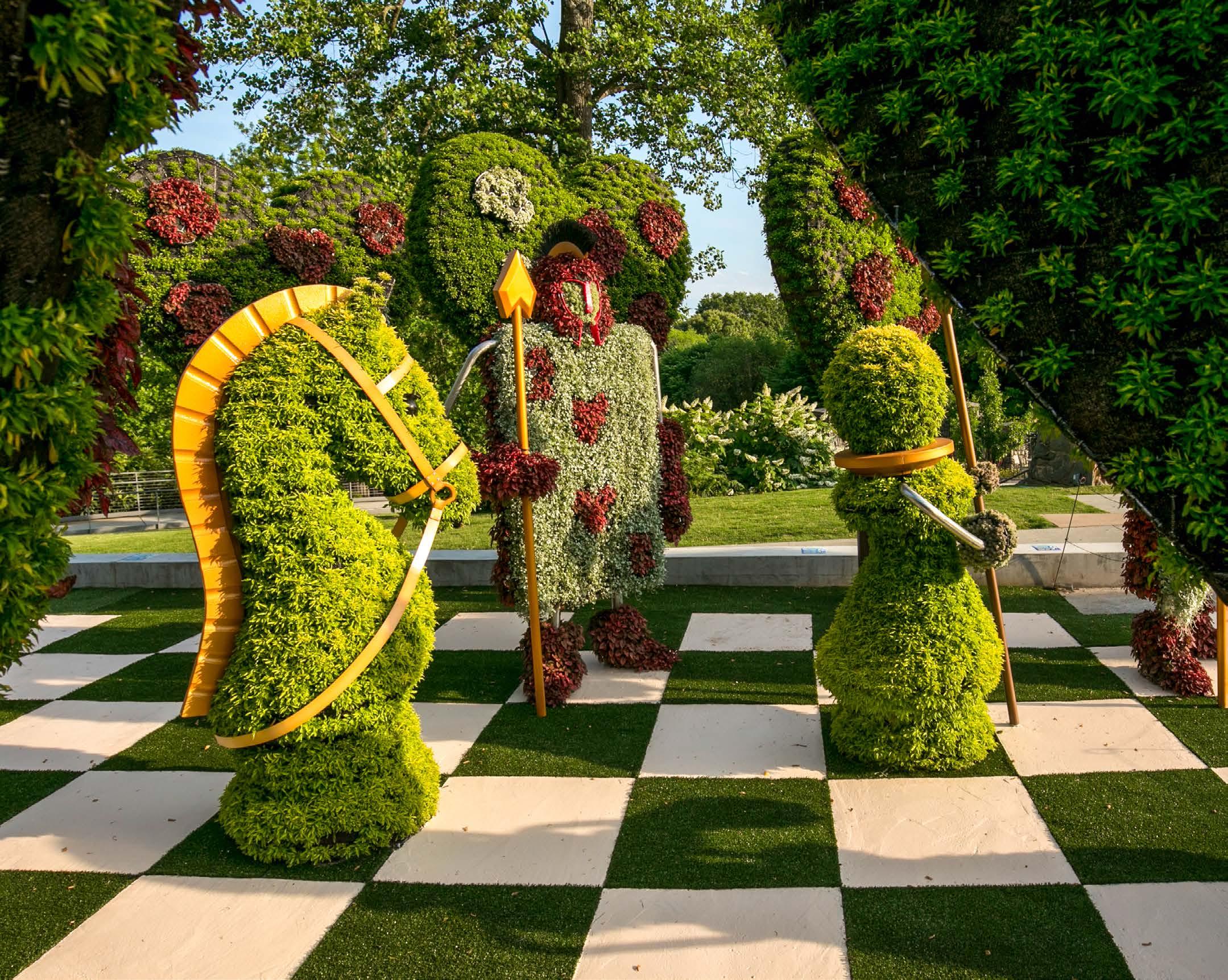
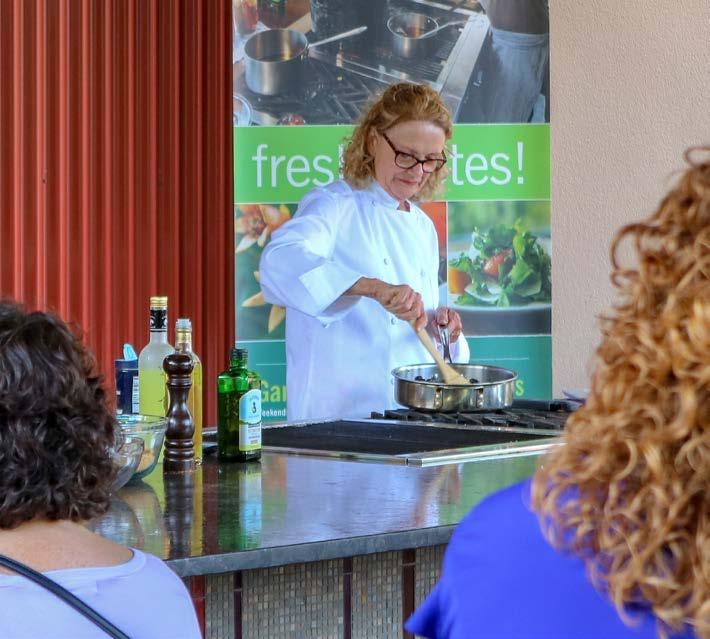
Garden Chef Cooking
Demonstrations
Saturdays & Sundays, May — October, 11:30 a.m., 12:30 p.m.
Garden Chefs showcase fresh seasonal vegetables, fruits and herbs in tasty recipes in the Edible Garden Outdoor Kitchen.
Well-Seasoned Chef Series
Select Tuesdays, May – October, 6:30 – 8:30 p.m.
Join celebrated Atlanta chefs for an intimate and relaxing culinary experience. Learn as they prepare and discuss a four-part menu with wine selections to enhance the flavors of locally and gardengrown produce. Circle Members receive advanced registration access. Learn more at atlantabg.org/join.
Fresh Plates Dinners
Select Wednesdays, May – October, 6:30 – 8:30 p.m.
Enjoy a fun evening of dining, sipping and learning as favorite neighborhood chefs prepare a four-part small plate menu. Learn new recipes and taste freshly prepared courses and wine.
Alice’s Wonderland Returns
Saturday, May 11 – Sunday, Sept. 15
Travel down the rabbit hole to explore seven installations of 38 topiary-like sculptures depicting many of the characters from
Atlanta Rose Show
Saturday, May 11, 1 – 5 p.m. Sunday, May 12, 10 a.m. – 5 p.m. Presented by the Greater Atlanta Rose Society, the annual cut-flower show
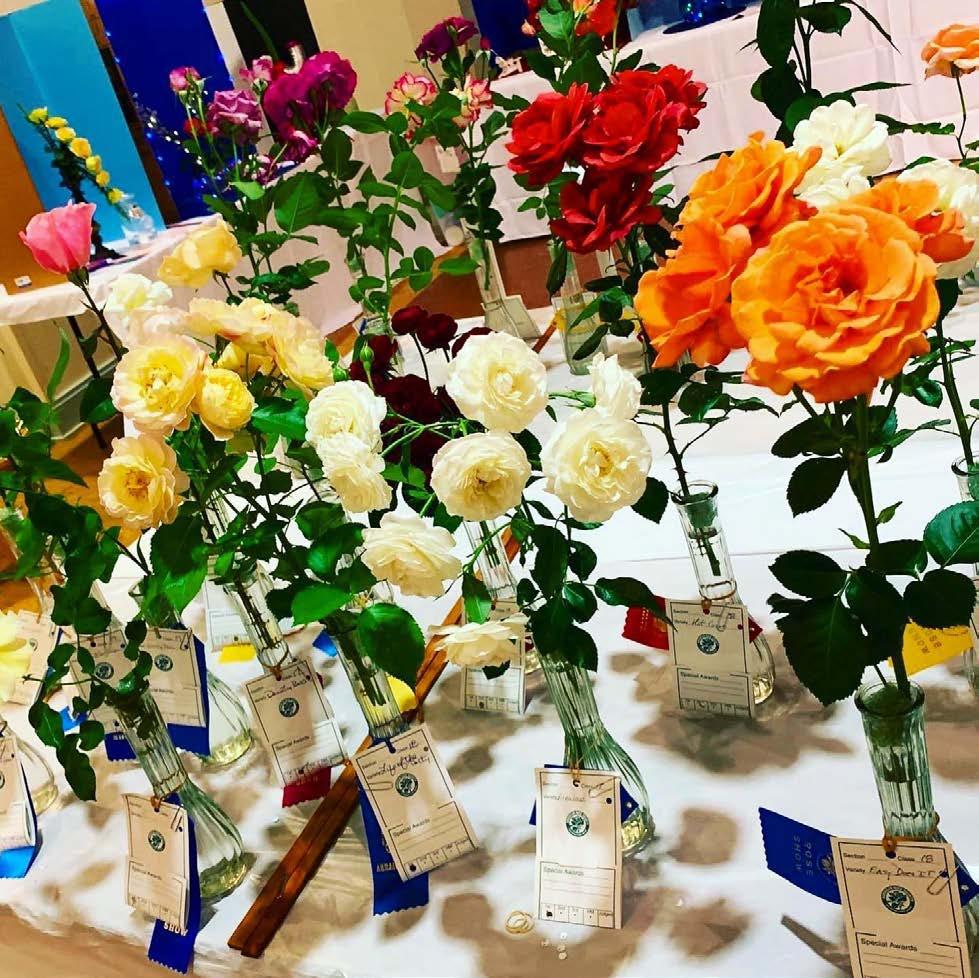
12 atlantabg.org | Atlanta
Learn
Lewis Carroll’s iconic tales.

Alston Lecture:
Rebecca McMackin
Tuesday, May 14, 7 p.m.
Learn how to use ecological insight to develop new landscape management strategies and why careful documentation of wildlife in your garden is crucial from horticulturist and garden designer Rebecca McMackin. The Philip and Elkin Alston Lecture Series is made possible by the generous support of the Charles Loridans Foundation.
Bubbles & Bites
Every other Saturday, May 18 –September 28, 11 a.m. - 2 p.m.
Celebrate Alice’s Wonderland Returns outdoors at Longleaf restaurant! Enjoy cocktails and champagne complemented by savory and sweet light bites. Reservations required. Details at atlantabg.org.
Sensory Friendly Evening
Monday, May 20, 4 – 7 p.m.
The Garden is open exclusively for individuals with cognitive and sensoryprocessing disabilities, and their families. Visit drop-in learning and art stations from 4 -6 p.m., and don’t miss Jeanne Lyon’s performance of Fantastic BugSnackin’ Plants at 5 p.m.
Refugee Recipe Celebration
Saturday, June 15, 10 a.m. - 2 p.m.
Celebrate the strong connections among plants, food and culture in honor of World Refugee Day. Chefs from Friends of Refugees mix up the weekend cooking demos with international recipes alongside other activities that highlight Atlanta’s diverse refugee communities and foodways.

Pollinator Party
Friday, June 28, 10 a.m. – Noon Bees, butterflies, birds and other animals that pollinate plants are responsible for one of every three bites of food! Enjoy this family celebration that honors the hard-working pollinators in Atlanta. Don’t miss Alyssa Easterly Miller’s performances of Jammin’ Junebugs at 10 and 10:45 a.m.
Summer Party
Saturday, July 20, 5 - 9 p.m.
Celebrate the sunny season at the Garden’s popular annual Summer Party! Experience a heightened Garden experience with live music, specialty food, cocktails and more.


AgLanta Eats
Monday, Aug. 26, 5 – 8 p.m.
AgLanta Eats, the hyper-local food festival, returns with tastings prepared by top local chefs utilizing the freshest ingredients from AgLanta growers and metro Atlanta farms. Guests will have full access to the Garden while enjoying farm-fresh food, a selection of beverages, live music, garden tours and more. Proceeds benefit the AgLanta “Grows-A-Lot” program, in association with Groundwork Atlanta and the Atlanta Mayor’s Office of Resilience, which supports the conversion of vacant and underutilized parcels in low food-access areas to productive urban farms and gardens.
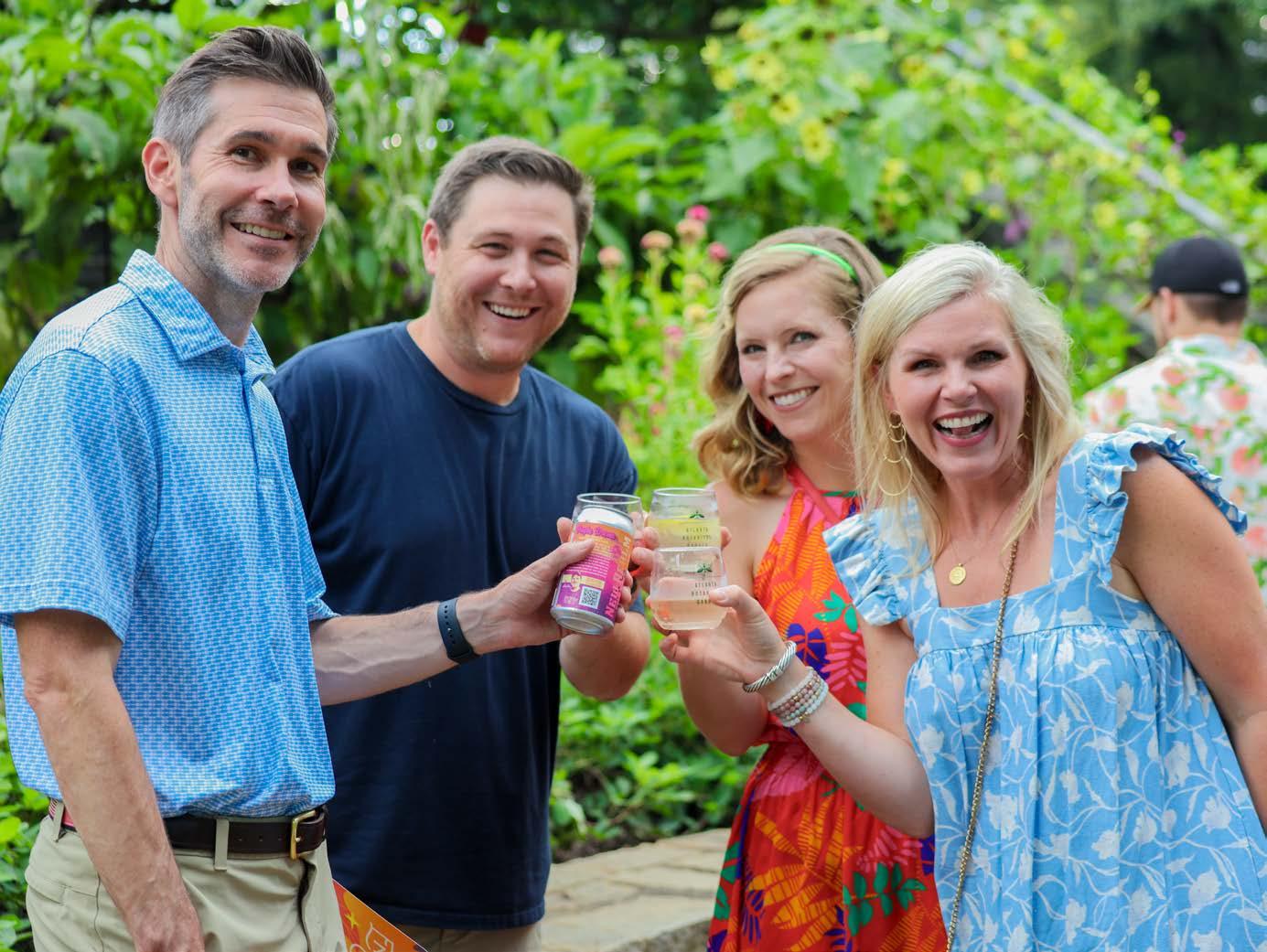
Cocktails in Wonderland
Thursdays, May 16 – September 12, 5 – 9 p.m.
Enjoy specialty cocktails from cash bars, scavenger hunts, live music, discovery stations, yard games and more while exploring the spring living-plant sculpture exhibition, Alice’s Wonderland Returns, dramatically lit at night.
Atlanta
|
13 atlantabg.org
A Note from the Director

The warm days of spring bring exciting new programs to the Gainesville garden. We are thrilled to bring back outdoor concerts with three bigname acts this summer and fall (Look for announcements soon!). There is no better place to enjoy an outdoor concert than our Ivester Amphitheater, with the full moon rising above the stage as a concert begins!
Several family-friendly festivals have been added this year, beginning with Junefest on June 1. Plan on joining us for music, food, games, kids’ activities, a pop-up plant sale and even a creative, interactive pollinator-attracting contest. Junefest is a chance to enjoy early summer in the garden, have some fun and take home a few tips for your gardens.
Summer also is the perfect time to enjoy our current exhibit, Glass in Flight, featuring 15 sculptures of insects made from steel and brilliant Dalle de Verre glass. Come witness the ways light transforms the pieces as you reflect on the beauty of the gardens gleaming with glass. And as a special treat, artist Alex Heveri will be on hand during Junefest, answering guests’ questions about her pieces.
The horticulture staff continues to work with the Newcomers group – a class of firstgeneration immigrant students from Hall County Schools’ Ivester Early College. This spring, the students helped plant our new Edible Garden, assisted with the installation of summer annuals in our containers on the Gainesville square and propagated plants that they could take back to their classroom. And thanks to an Earth Day project from Bright Youth United for the Future of the Newtown Florist Club, our Pollinator Garden was planted adjacent to the Edible Garden and our new horizontal beehive.
Hope to see you in the Garden soon. It’s buzzing with activity!
Art that dazzles Glass in Flight sculptures
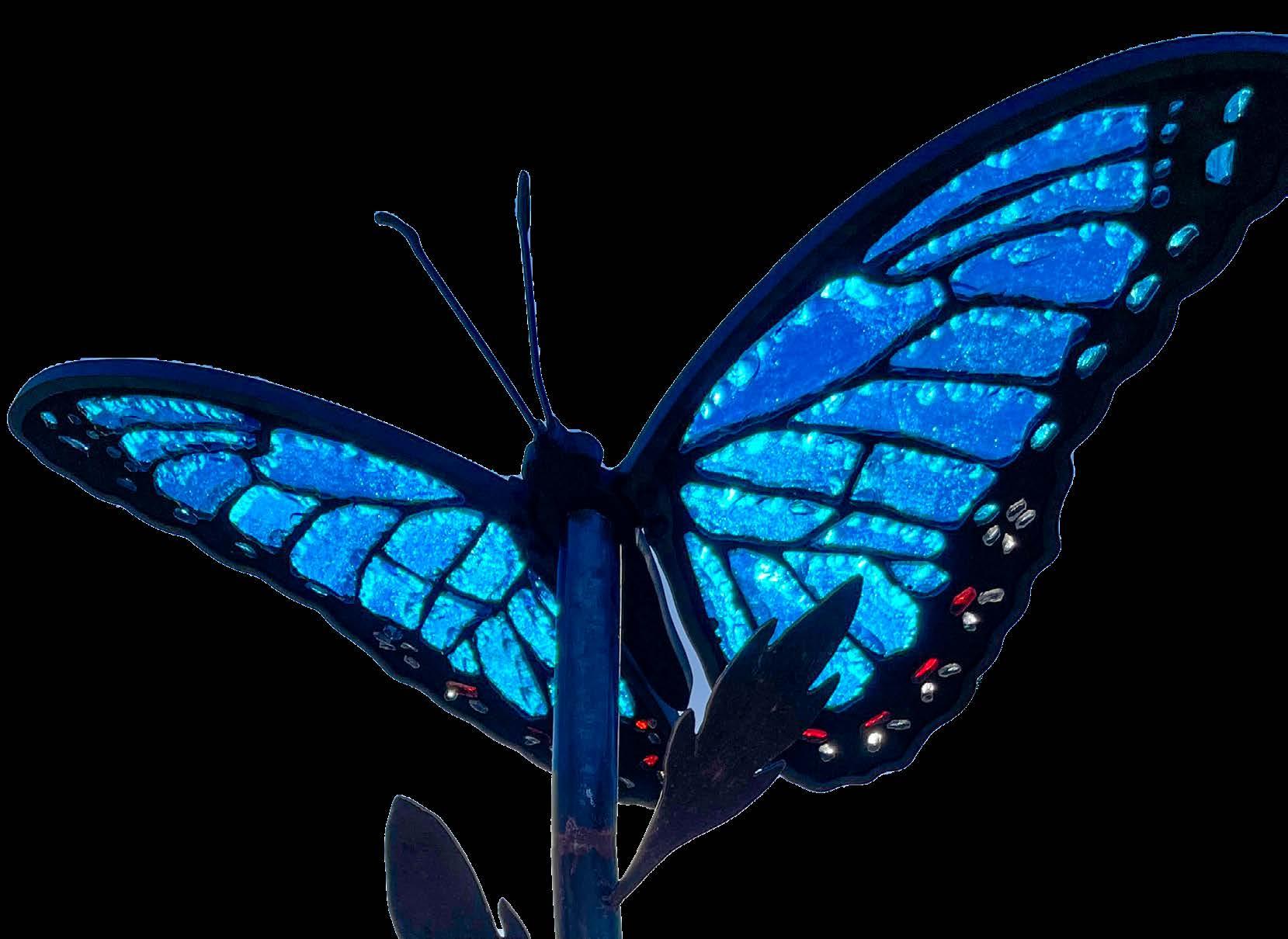

The 15 installations featured in the Gainesville garden’s summer exhibition, Glass in Flight, by artist Alex Heveri fit perfectly into the many garden rooms along the winding pathways. The glass-and-steel sculptures showcase an array of beneficial insects and pollinators including hummingbirds, a praying mantis, bees and butterflies.
Heveri’s work, on display through October 13, is inspired by nature and focus on the interdependence of light, plants, pollinators and the environment. The Tucson-based artist, who has been sculpting for more than 25 years, creates her pieces by combining steel frames with Dalle de Verre, or “antique slab glass.”
“It is this interplay between the two – the strength and power of steel and the glittering formlessness of light through deeply colored glass – that informs my art,” Heveri said.
1-inch thick glass is cut to fit a space in the steel frame and chipped on the corners and edges. These facets of the glass sparkle when sunlight hits the sculpture. In addition, some of the steel frames have a sparkling additive in the paint, creating an iridescent exoskeleton.
Among the featured sculptures are a large ruby-throated hummingbird joined by two juveniles on tree frames around the Event Lawn. Along the Promenade, visitors can view four bees attached to a 6-foot section of a beehive, while a 7-foot praying mantis guards the garden near the Glade. And three large dragonflies on poles are joined by four butterflies as visitors meander up the hill from the bottom of the stream.
All of the sculptures change during the day as sunlight crosses the garden –sparkling and dazzling young and old alike, and inspiring a connection to the natural world.
Mildred Fockele Gainesville Garden Director
Dalle de Verre is a historical technique used in churches throughout the ages to create colorful windows. Each piece of
Fockele Gainesville Garden Director
14 atlantabg.org
| Gainesville
Mildred

Not your mother’s hydrangeas
Consider straight species for something different
Hydrangeas are a summer pillar of the Gainesville garden’s plant collections. Yet, while everyone loves the giant mophead blooms borne from breeding, botanical gardens are always searching for something different. With landscapes increasingly dominated by showy hybrids, it’s good to remember our hydrangea roots. These

including the Georgia native H. barbara. Featured in the Gainesville garden is another showy species: H. hydrangeoides This plant is common in Japanese forests but is only recently gaining popularity across the United States. While it can take up to seven years for a plant to establish, the summer blooms are worth the wait. Large, white, lacecap blooms blanket the vine. The decorative bracts are uniquely tear shaped.

Native to the moist understories of southwestern Japan, Hydrangea luteovenosa is rarely encountered in the United States. The species name refers to the identifying gold veins on its small, serrated leaves. Spring brings a flush of fragrant white, lacecap blooms — earlier than most other hydrangeas. The decorative bracts around the edge of the true flowers are charmingly sparse, providing just enough antennae-like drama to draw in the pollinators.

Selecting a straight species isn’t limited to white flowers either!
Another Japanese native, H. involucrata, blooms in stunning shades of true blue with showy white bracts. ‘Blue Bunny’™ is a wonderful cultivar on the market.
– Kelsey Bartlett, Senior Horticulturist
Glass in Flight
Through Sunday, Oct. 13
Created by nationally-known artist Alex Heveri, the exhibit features glass sculptures that capture the essence of flight as sunlight through the colored glass mimics the transparency and iridescence of insect wings, intensifying the illusion of movement and life.
Story Time and Sensory Bins
Wednesdays through September, 10 a.m. – Noon
Bring the kids to listen to stories on the terrace at 10 a.m. and enjoy the sensory bin located in the Children’s Garden until noon.
Adult Education Classes
May– August
Topics include herbs, horticulture, landscape design and more. Details at gainesvillegarden.org.
Fairytale Fridays
Second Friday, May – July
Come to the Garden dressed as a favorite fairytale character, such as fairies, dragons, knights, princesses, witches and wizards, and enjoy magical activities and fun for the whole family. At 11 a.m., hear a story read by Mother Nature followed by a fairytale parade filled with music and bubbles.
Junefest
Saturday, June 1, 10 a.m. – 3 p.m.
This new event will provide enjoyment for the entire family. Speak with beekeepers and monarch experts while enjoying live music, refreshments and children’s entertainment, including face painting, games and performances by Miss Gail’s Jumpin’ Jam Band. Enjoy an exclusive tour of the current Glass in Flight exhibition with artist Alex Heveri.
Garden Magic Summer Camp
July 22 – 26
This summer camp fosters a fun, creative environment for kids to get excited about the science and magic of nature with STEM-based activities.
gainesville happenings
15
Gainesville |
membersonly
QUESTIONS? Call 404-591-1539 or email membership@atlantabg.org

SUPPORTING & ABOVE
Strings in the Garden
GAINESVILLE: Monday, May 20, 6- 9 p.m.
Supporting-level members and above are invited to enjoy a popular musical evening under the treetops while mingling with fellow members, enjoying delicious fare and listening to a live string performance by Lilac Wine Strings. Invitations will be mailed. To upgrade to the Supporting level or above, call 404-591-1544.
CONTRIBUTING & ABOVE
Light Bites & Garden Insights
GAINESVILLE: Friday, May 31, 10:30 a.m. – Noon
ATLANTA: Monday, June 24, 5:30 – 8 p.m.
ATLANTA: Monday, August 19, 5:30 – 8 p.m. Hear presentations by Garden experts while enjoying light refreshments. May 31: Glass in Flight artist Alex Heveri discusses her creative process; June 24: Horticulturists Jim Smith and Jose Rimerez explore the Garden’s history of mosaiculture and aspects of Alice’s Wonderland Returns; Aug. 19: Amanda Bennett, Vice President, Horticulture & Collections, discusses recent horticultural accomplishments and future plans. Look for an email with RSVP information. To upgrade to Contributing level or above, call 404-591-1544.
Member Previews Alice’s Wonderland Returns
CONTRIBUTING & ABOVE : May 6, 6 – 9 p.m.
ALL MEMBERS : May 7 and 9, 6 – 9 p.m.
Be the first to experience Alice’s Wonderland Returns while enjoying live music, interactive activities and imaginative entertainment. In addition to reacquainting with all of Alice’s best friends from previous exhibitions, meet the new Singing Flowers along Flower Walk.
ALL MEMBERS
Member Summer Evening
Monday, July 29, 5-9 p.m.
Members may tour Alice’s Wonderland Returns while enjoying live music, surprise entertainment, family-friendly activities and a member treat.
2023 VOLUNTEER OF THE YEAR:
Marge Smith

Smith began volunteering as a docent as the Children’s Garden was opening 25 years ago. Shortly after, she found her spot in the Gift Shop, where she volunteers every Tuesday. “I love being in the Gift Shop because people share their excitement about their visit and what a beautiful garden we have,” she says, “and I couldn’t agree more!”
2024 LIFETIME ACHIEVEMENT AWARD: Jo Ann Bertrand
Bertrand began her service in the Conservatory in 1995. She has assisted in the Tropical Rotunda, back-up greenhouses, Orangerie and Conservation Greenhouses. Staff consider her a steadfast supporter of the Garden and its mission, with a special devotion to the Conservatory, a joy to work with and an enthusiastic


I live in the metro area and planted several peony bare roots last fall. I followed the instructions and planted them 2 inches in the ground. The plants all produced shrubs this spring but no blooms. Why didn’t I get any flowers? Metro area temperatures do not get cold enough for peonies to form buds, so the
plants must be planted shallowly, with the roots covered only by ½-inch to 1 inch of soil. This will ensure that the plant gets the chill hours needed. Georgia sun and temperatures quickly heat up in spring and get too hot for peonies, so plant them where they are getting only morning sun only or afternoon shade.
Atlanta Botanical Garden 1345 Piedmont Avenue, NE Atlanta, GA 30309 NONPROFIT ORG U.S. Postage PAID Permit No. 1162 Atlanta, GA
16 Clippings is available online at issuu.com/atlantabotanicalgarden
planthotline 404-888-GROW planthotline@atlantabg.org























































